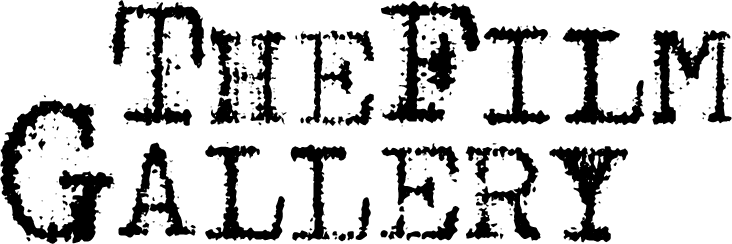Students and Young Artists Exhibition
stÆtionary
January 24 - January 31, 2025
From January 24 to 31, The Film Gallery is pleased to present Stætionary, its first exhibition of students and young artists. Curated by filmmakers and professors David Kidman and Pip Chodorov, this dynamic group show brings together 22 students and recent graduates trained at Dongguk University in Seoul, South Korea, and the École supérieure d’art et de design TALM in Tours, France.
Previously displayed at Kote Gallery in Seoul last December, Stætionary will be shown at the Film Gallery in Paris before continuing its journey to MAME gallery in Tours. These three Stætionary exhibitions are part of a collaborative exchange program between ESAD TALM and Dongguk University.
This project takes its cue from an observation that can be made by most: that what is considered to be the practice of cinema (and even more so, video) is based on the use of office equipment. The hope and intention is that it is a means of deconstructing the hierarchies of the production of time based art projects, in a wonky parallel of the way these objects have redefined the work environment. The computers used to edit, the telephones to shoot footage, the projectors used to show digital media are all conceived as machines to work in the office. It seems a long way from the exclusivity of the film equipment used in the past, inaccessible and very expensive, needing a good deal of technical expertise to put together. Even though there are still expensive technically challenging means to make films and video available and in use amongst the “professionals”, the basis of the means of production is increasingly determined by the use of binary code.1
The idea and the ideal of the all digital, whether in the cinema or other forms of artwork (which always seems to be illustrative) has a flattening effect on the perception of what art is or can be. The non fungible token market is a floating confusion of what art is, the reproducible nature being quite ancient, having been inherent in not only photography, but lithography, sculpture, etc., and any perceived conceptual foundation quite lacking. It is difficult to see what the NFT changes.
The history of cinema is also a history of the use of the moving image for analysis and the practical, from the chronophotography of Eadweard Muybridge or Étienne-Jules Marey, through the use by Lillian Moller-Gilbreth and Frank Bunker of cameras and captors from 1914 on to determine the ideal physical position of the worker for the accomplishment of tasks. Their work is not far, conceptually, from the use of motion capture to produce the skeuomorphic2 cinema of today, except that they used it for analysis, whereas the analysis of skeuomorphic cinema is used to reveal an image of what would have been. The simulacrum, that image of an image of an object that never existed posited by Jean Baudrillard is the tool of today’s cinema.
The projects in these workshops are intended to misuse the office equipment available in order to question both the material of what cinema is and offer new ways of experimenting with those familiar objects. We may consider them to be constraining objects, used to impose a sort of regime of secretariat to everybody who works (I am sure that we are “ victims ” of the Taylorism inherent in the work of Moller-Gilbreth and Bunker), forcing us to type rather than write by hand, but there is always a way for artists to subvert primary or secondary functions and it is the intention of these workshops to conceive and produce such subversion.
As examples of the kind of work that may be possible, I have been looking at the possibilities of Stætionary for a while now, using scanners and telephones, in conversation with the palpable objects of film stock, developed and copied, edited and occasionally abused. It has also been a means for me to reconsider the relationship between work produced in the past, both my own and that of others, and its influence on the possible theorisation of what is broadly called cinema. I have gone back to the work which permitted me to find a way of experimenting, whether with the moving image or its narrative content. It has also helped in redefining my position in a world where the certainties of cinema theory no longer hold ; the darkened theatre is no longer the main place that cinema is seen, the fragmentation of ideology and any philosophical positions remove a sense of common contemporaneous lived experience. Is there a place for a single theoretical model even within the work of an individual artist?
These questions informed the static and moving pieces that I have been making over recent years. I think that finding a place for discussion of this uncertainty in the workshop would be a valuable way of breaking down hierarchies between the teacher and the taught, which seems to me to be essential to finding new terrain for research as an artist, whether technically a student or a teacher.
- David Kidman
CURATED BY ↓
David Kidman & Pip Chodorov
ARTISTS ↓
Elhia Mortier
Axèle Huchet Lamotte & Yvanh Pommarath
Solène Allard--Raynaud & Hewon Park
Subin Han and Hyeongyeong Kim
Kaya
Suhyun Jeon
Yunyoung Jang
LAZYVIDEO (Ji-hyang Kim, Sue-min Shin & Hae-jin Lee)
Nayeon Lee & Wonjae Ha
Boyoon Choi
Marie Dubois
Médéric Boutin
Meiyi Luo
Minkyung Lim & Chan Kwak
Killian Joseph Fullam
Pip Chodorov
David Kidman
Exhibition organised by ↓
With the support of ↓
[VERNISSAGE] STÆTIONARY
© Gaia Marinese
























